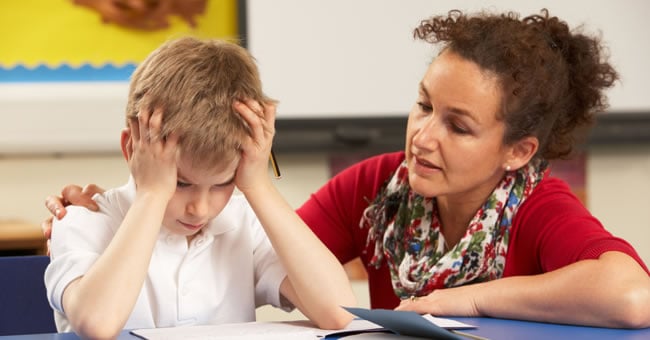
People of all ages experience stress. From everyday stressors (e.g., anxiety about making friends or doing well at school or at work) to major life-changing stressors (e.g., abuse, disasters, death of a family member), stress can either help people improve or hinder their success. Stress can be especially harmful and disruptive for children, because they are still developing and often lack the skills needed to appropriately respond to stress. In her book Helping Them Heal, Karen L. Peterson, PhD, describes the different types of stress that children may experience and how they typically react to stress:
Types of Stress
- Developmental Stress – This type of stress occurs when children are expected to respond to activities and requests that overtax two or more developmental domains (i.e, social, emotional, cognitive, and physical domains) at the same time. These types of demands are often negative experiences and stressors for children. Peterson gives the example of asking a five-year-old to participate in a relay race and "utilize cognitive problem solving, language interpretation, physical control and coordination, and social engagement for a single coordinated and integrated event."
- Acute and Chronic Stress – The difference in acute and chronic stress is that acute stress is the result of a single, often unexpected experience that varies in how long it takes to resolve, while chronic stress includes ongoing and pervasive experiences that accumulate over time and result in a particularly challenging experience with stress. Being bitten by a dog or getting lost are examples of acute stress, and poverty, violence, and death are examples of chronic stress.
- Complex Trauma – Described by Peterson as "a special type of stress", complex trauma refers to "multiple stress-related life events experienced by a child" with a bigger focus on understanding how the kinds of negative events experienced by a child affects him or her in both the short and long term.
Peterson also explains that the intensity in which stress is experienced plays a role in how children respond to stress. Positive or mild stress is often a motivator for children to improve or succeed in a task and can provide structure or behavioral expectations for children. Tolerable or moderate stress gives children feelings of anxiety and concern that remain with the child for a longer period of time. Toxic or chronic stress is often long lasting and intense. This type of stress may cause a "significant fear" in children, and they may not be able to respond to it immediately. Trauma is the last level of stress and is the most damaging to a child's development. Peterson describes trauma stress as "excessively intense, threatening, generally chaotic, overwhelming, and horrifying."
Children's Response to Stress
When children respond to stress, they typically go through three stages:
- Alarm – The child becomes aware of a threat and absorbs the emotional and physical information from the potential stressor. Keep in mind that the alarm stage is often not rational for children.
- Appraisal – The child evaluates the stressor and compares it to his or her past experiences. Stress appraisal will be affected by the child's self-efficacy and self-awareness.
- Coping – The child searches for and finds ways to deal with the stressor. Peterson clarifies that how the child uses coping strategies "has little to do with their realistic effectiveness but everything to do with prior use, lack of skill, perceived success, and physical discomfort."
It's important for you to remember that stress is a multisensory experience for children and that stress has a different impact on children than it does adults. Understanding how children respond to stress will ultimately help you better understand the children in your care and will also help you support children when they are dealing with stressful situations. Be sure to browse our social-emotional materials for ideas on items you can include in your classroom to help children respond to stress in a positive way.
